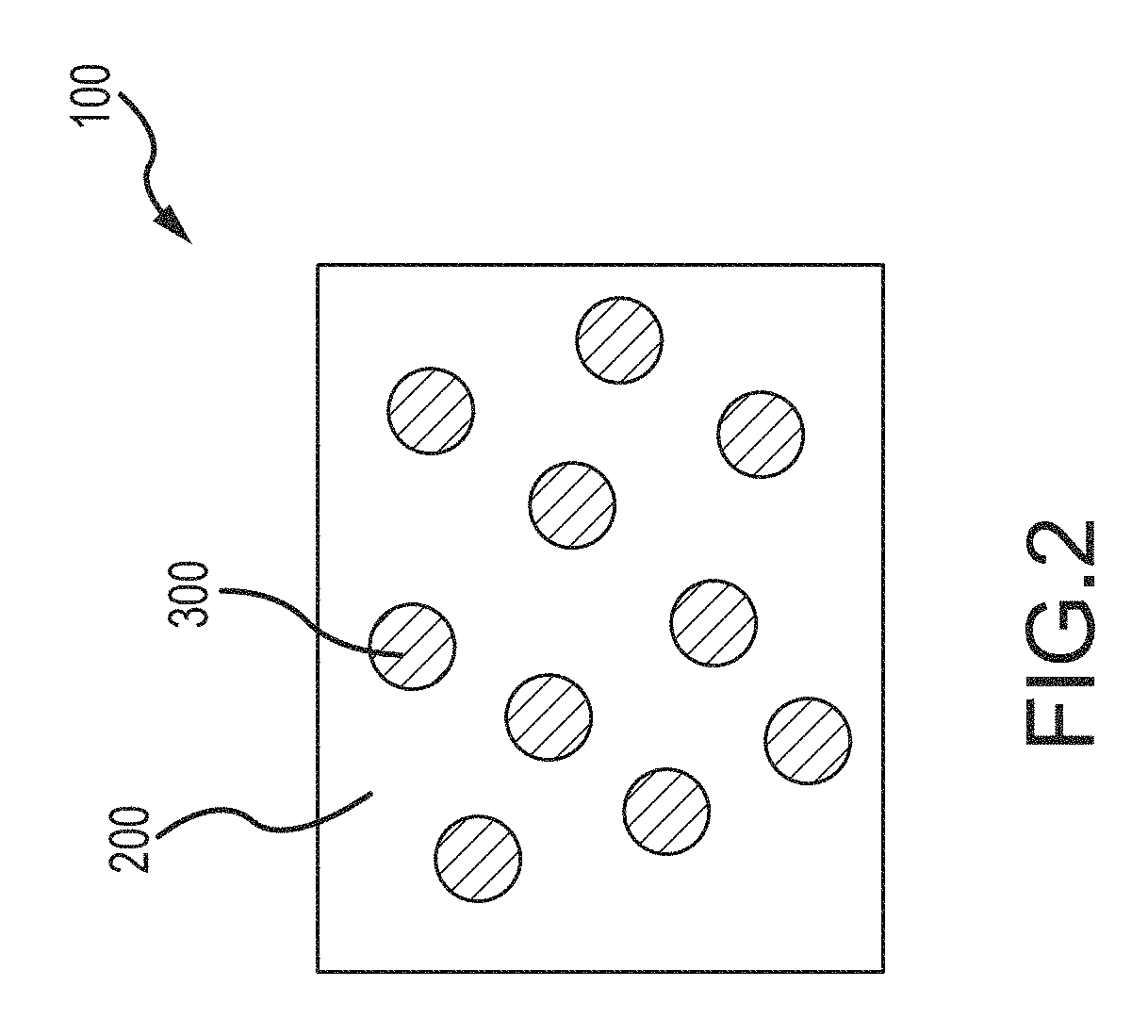Aluminum alloys having iron, silicon, vanadium and copper, and with a high volume of ceramic phase therein
a technology of aluminum alloys and ceramic phases, which is applied in the direction of blade accessories, machines/engines, pumps, etc., can solve the problems of increasing the strength of aluminum alloys, and achieve the effects of rapid solidification, rapid solidification, and convenient selective heating of powders
- Summary
- Abstract
- Description
- Claims
- Application Information
AI Technical Summary
Benefits of technology
Problems solved by technology
Method used
Image
Examples
example 1
[0036]An Al—Fe—V—Si—Cu ingot was used as feedstock and was subject to an inert gas atomization process to produce powder. The powder was then screened and blended for use in producing additively manufactured products. The products were additively manufactured via powder bed fusion (PBF) using an EOS M280 machine. Chemical analysis of the powder and the as-built components (final products) was conducted via inductively coupled plasma (ICP), the results of which are shown in Table 2, below (all values in weight percent).
TABLE 2CompositionsItemFeVSiCuBalance*Starting8.141.481.662.10Al andpowderimp.As-Built8.08 + / 1.46 + / −1.65 + / −2.09 + / −Al andComponents**0.130.020.020.03imp.*The impurities were less than 0.03 wt. % each and less than 0.10 wt. % in total.**Average composition of 24 as-built components with standard deviation shown as + / −.
[0037]The density of the as-built components was determined using an Archimedes density analysis procedure in accordance with NIST standards. The Archim...
PUM
| Property | Measurement | Unit |
|---|---|---|
| temperature | aaaaa | aaaaa |
| size | aaaaa | aaaaa |
| size | aaaaa | aaaaa |
Abstract
Description
Claims
Application Information
 Login to View More
Login to View More - R&D
- Intellectual Property
- Life Sciences
- Materials
- Tech Scout
- Unparalleled Data Quality
- Higher Quality Content
- 60% Fewer Hallucinations
Browse by: Latest US Patents, China's latest patents, Technical Efficacy Thesaurus, Application Domain, Technology Topic, Popular Technical Reports.
© 2025 PatSnap. All rights reserved.Legal|Privacy policy|Modern Slavery Act Transparency Statement|Sitemap|About US| Contact US: help@patsnap.com



